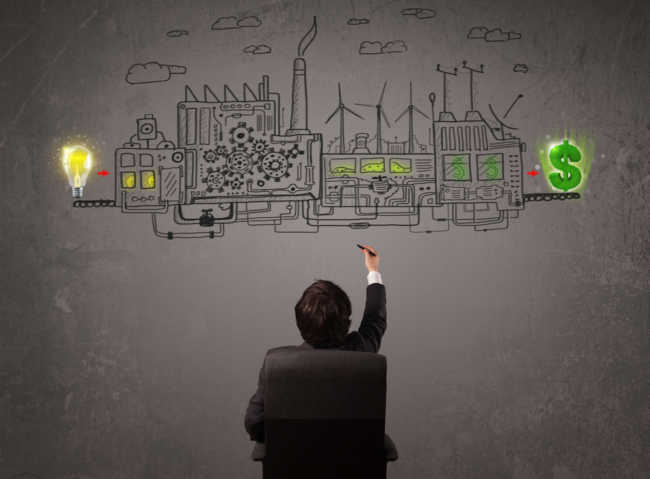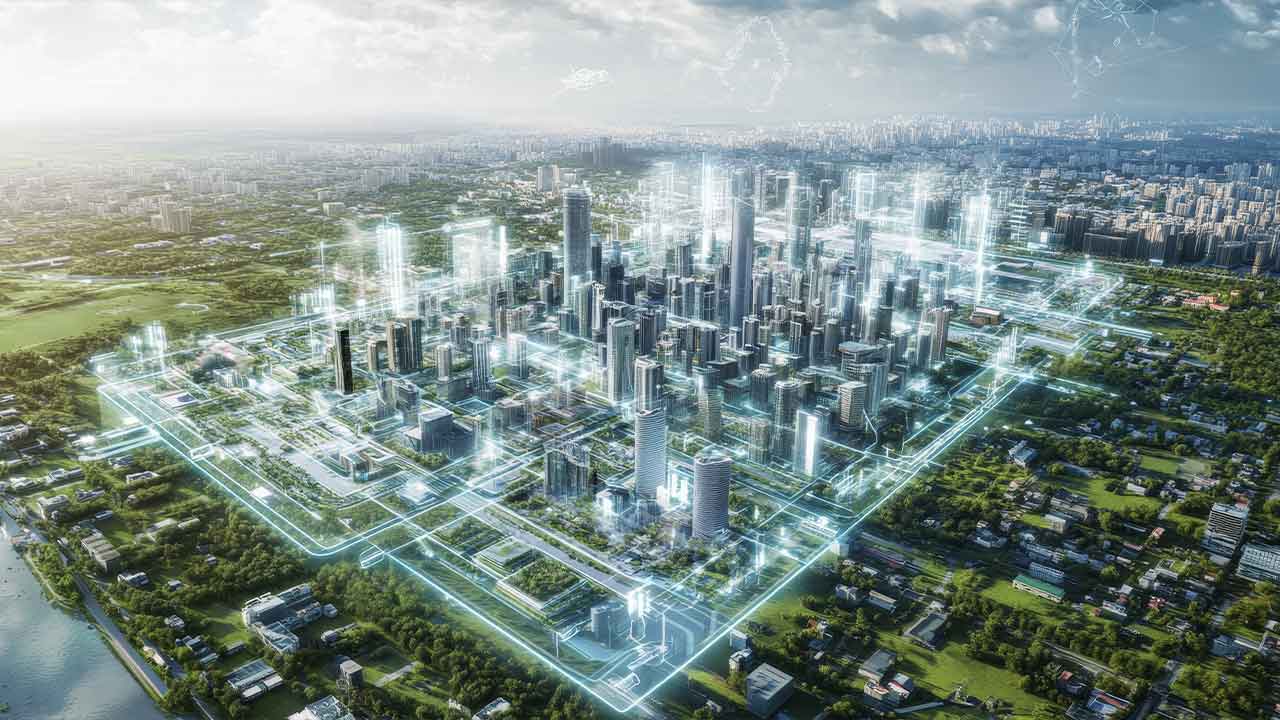Smart Solutions for Connected Cities Using Data Visualization
The heating and cooling infrastructure in Västerås is a complex operation managed by utility company Mälarenergi that lacked the visibility required for effective control. A collaboration between Mälarenergi and ABB allowed the collection of data that could be integrated into a common platform providing real-time visualization of the network delivering the ability to develop smart solutions for their customers.
Sweden’s fifth largest city, Västerås, has embarked on an ambitious digitalization strategy to develop smart city solutions that will make it more attractive as a community for citizens and industry. The project is being led by Mälarenergi, who provided a broad range of essential services for the city’s 150,000 residents and its businesses. The utility operates hydropower plants, the local power grid, a waste-to-energy plant, heating and cooling networks, water and wastewater treatment plants, a water distribution network and a fiber-optic network. More about What Is a Smart City Platform?
“Our customers are changing their behaviors, and they don’t just compare us to other energy suppliers, but to other industries,” Joacim Sundqvist of Mälarenergi explains. “These industries are providing new services based on digital solutions, and we need to do that as well. We could not achieve this digital transformation on our own; we needed to collaborate with others.”
Mälarenergi formed a team with ABB (with its ABB Ability™ Collaborative Operations) and Microsoft with its Azure cloud infrastructure.
ABB Ability™ Collaborative Operations is part of the company’s ABB Ability™ portfolio of digital solutions. It provides performance management, remote monitoring and preventive analysis tools to ensure security, improve efficiency and increase productivity in many industries globally.
ABB Ability™ is the company’s unified, cross-industry portfolio of digital solutions extending from device to edge to the cloud, integrating data to and from products, systems and services to deliver actionable information. The platform uses Microsoft Azure as the cloud for its integrated connectivity, so users can access enterprise-grade infrastructure that benefits from Microsoft’s significant portfolio.
“A key objective of this digital investment is to integrate the control rooms of the many automation systems that manage these distributed operations to create one unified operating environment,” said Martin B Petersen, regional marketing and sales manager, Northern Europe, for ABB Power & Water. “This solution will integrate ABB technologies and services with Mälarenergi’s existing operational expertise. Using data that is available in society and making it work for society.”
Applied to the district heating network, for example, which serves 98 percent of the city’s buildings, the digital transformation will optimize operational performance and reduce energy consumption. Data analytics will make it easier for operators to identify, categorize and prioritize potential issues with assets, processes and risk areas, so they can increase efficiency and reduce costs.
District heating
Mälarenergi’s Sundqvist explains that there was a need for accurate, real-time information to control the district heating system. “We felt that we needed good visualization because at the moment the operators don’t have much information to help them operate the network,” he said. “They have to manage a lot of production, but we don’t have much data visualized. It’s a trend for the energy companies in the whole of Sweden and Denmark to create smart solutions with data.”
He believes that there are significant benefits offered by digitalization and cloud solutions to create smart solutions with data. This project will start with the district heating system where the first step is to create excellent visualization to obtain a full, complete picture of the customer and their needs and identify the bottlenecks in the district heating network.
Västerås Heat and Power Plant is the largest in Sweden and one of the cleanest in Europe. The plant produces heat and electrical power simultaneously. In total, the combined heat and power plant comprises four separate blocks, which consist of a boiler and a turbine and a fifth block with just a boiler. Production is primarily performed using renewable biofuels and amounts to 700 GWh of electricity and 1,800 GWh of heat annually. A new boiler for heat and power is under construction and when operational in 2020 will use recycled wood as a fuel.
All management of heat, cooling, and electricity takes place in the control room at the power plant. “We produce the district heating from the power plant, and it spreads out all over the city of Västerås,” Sundqvist adds. “It’s a large district heating network that we began building in the Fifties and now spreads all over the city with over 900 kilometers of pipes.”
Collaborative approach
Through a series of workshops, meetings and a field trip to Helsinki to study a similar installation, ABB and Mälarenergi gained a better understanding of the requirements that allowed them to come up with a proof of concept.
A pilot was developed that demonstrated the ability to deliver the required results. “We needed to show that we could deliver something of value,” Petersen adds. “It is one thing to show some data on an excel sheet, but if you can see the visualization you can understand how it can give more value to your end customer; seeing is believing. It was a success, and we are now working to transform these achievements into a real usable system that can bring them value.”
“We have discussed the results with the partners and developed some Key Performance Indicators (KPIs) that we thought would offer benefits to customers. We came up with six KPIs, some of these as a PowerPoint presentation, to help customers to understand how we envisaged the scenario going forward.
“That was the kind of proof of concept they needed because they could see that we could deliver the level of visualization needed to bring some value. The next step is to ensure that all the data required to achieve this is available, and if not, where best to target the investment to deliver this data.”
Value from data
Sundqvist explains that the benefits to Mälarenergi and its customers is that they can see in detail how they produce heat, cooling and electricity along with the customer demand patterns. This information gives them a better understanding of when and what they need to generate. “We want to optimize the entire production of district heating from the data we are collecting and create a visualization of it, so we can see how much heat we have to produce each hour.”
A challenge faced by the team, which is common to many digitization projects, was the quality of the data available. “You have to have the right amount of data collected at the right sampling interval,” he says. “The big problem for us and the first step is to ensure that all the data is available and then pick out which data is most useful. We want to have a 15-minute online sampling of the data, and that has been a challenge. Online meters with 15-minute collection intervals are being installed all over the district heating network, but for now most of the data is collected hourly, which is not online. It has been a big challenge for us because we have a lot of different systems from which we need to collect data before making it available in one place for the ABB Ability™ platform.”
To improve the availability of data, Mälarenergi has installed new online meters that collect data at the required intervals. “I think that right now we can obtain the data that we want from all the different systems, so the next step during summer and autumn is to start to create the visualization of the district heating network and then start to build some smart solutions and KPIs and dashboards for working with the system.
“We feel that we have to do more with the data and create smart solutions and offers for our customers,” Sundqvist concludes. “We have to step it up a notch. I think that’s the common trend for any energy company. We want to be able to use data from across our plant and create smart solutions based on this information.”
For Petersen, success from any project like this requires collaboration. “You cannot do it on your own,” he adds. “This project is about collaboration between industry and end customers, and from that, you can deliver a system that is usable and delivers real benefits.” More about City Digitalization and City 4.0
This article originally appeared in Hot Cool Magazine on September 15th, 2018. The article is sponsored by ABB.



